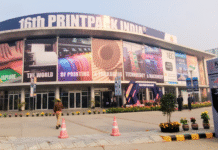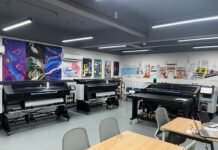Kovacevic says that the ability to print direct to fabric answers requests from customers of the older DX3200. It does make for a simpler workflow although printing to fabric also limits users to precoated substrates. Consequently most users will probably be better off printing to transfer paper, which gives a better choice of uncoated, and therefore cheaper, polyester materials. It should also produce better quality prints, particularly where fine text is needed and is likely to be the preferred choice for anyone producing home decor applications.
It will take transfer papers from 70 gsm and higher. Some users will favour lighter papers to save costs but Dries Hublin, global inkjet application specialist at Agfa, notes that heavier papers allow for higher ink coverage, which can lead to better print quality, though may slow the printer down, adding, “Thinner papers absorb less ink so they can transport through the printer at higher speeds but the ink coverage will be less.” Customers can expect ink consumption to be around a fairly economical 4-5ml per square metre.
It does not have a built-in calendar unit but as Hublin points out, an inline calendar unit would slow down the printing because you cannot sublimate at higher speeds. Kovacevic adds, “We wanted to split the processes so that the printer doesn’t get burdened with the sublimation work. Also there are a lot of very fast sublimation units on the market so our customers can buy multiple printers for different applications and buy just one calendar unit.”
Strangely, there is no support for running dual 1.6m rolls. Auwera says that a single operator can load a fresh roll in under seven minutes. The rolls appear to load from the front of the machine, which should make it easier to find space for the printer. It’s been designed to have a very short media path which should help to reduce waste.
It’s worth noting that the Avinci is a rebadged South Korean machine, though Agfa hasn’t said which vendor it has worked with. Auwera did add, “Agfa is putting in a lot of R&D to bring it to the market.”
Naturally, Agfa is supplying its Asanti RIP but Auwera says that the company is also developing support for Caldera and Onyx RIPs since many potential customers may prefer to use the software they are already familiar with, though I don’t think anyone would regret using Asanti.
Van der auwera says that the CX3200 will be positioned as a mid-segment printer and will cost between US$ 200,000 and US$ 500,000, adding, “That’s the level of investment you need to look into.” It’s available now and you can find further details from agfa.com.
Republished by permission from www.nessancleary.com
















